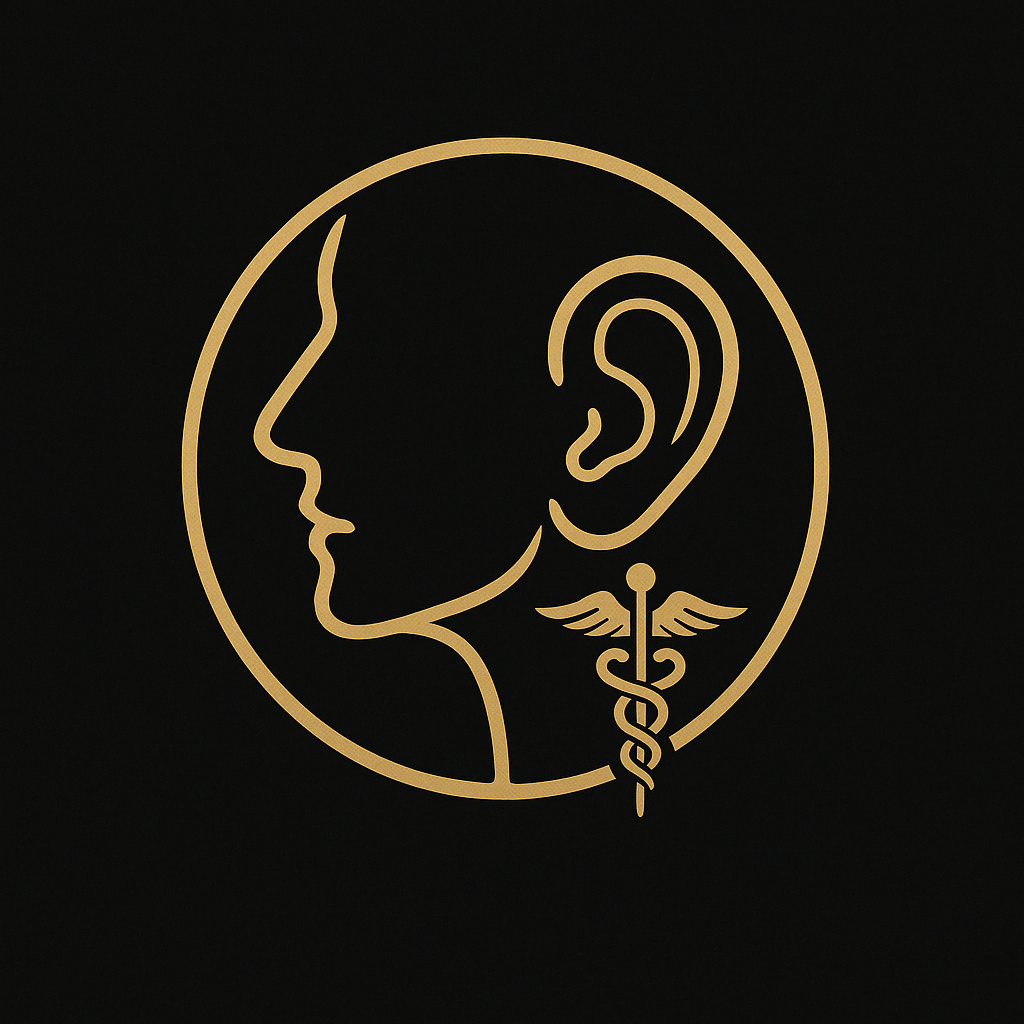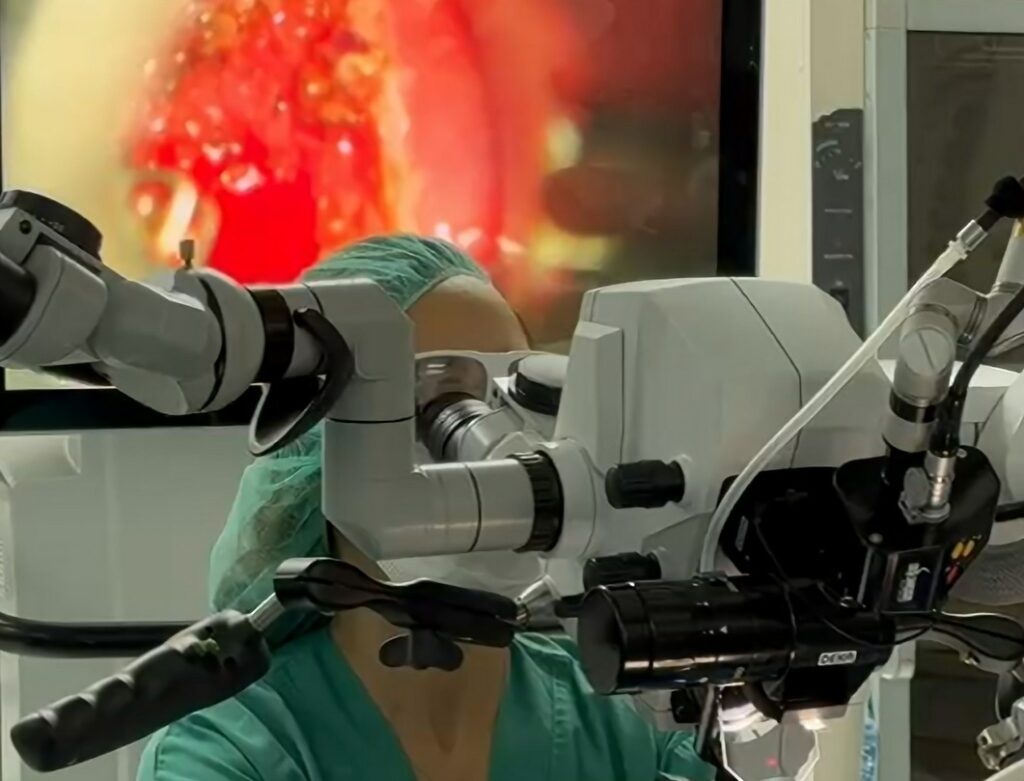
Treatments and Surgeries
Dr. Tamar Tovi Porat is a specialist in Otolaryngology (Ear, Nose, and Throat) and Head and Neck Surgery.
On this page, you can explore a variety of advanced treatments and surgical procedures, all performed with a personal, professional, and patient-centered approach.
Revision Rhinoplasty
Revision rhinoplasty is a surgical procedure aimed at improving or correcting the results of a previous nose surgery. It is typically performed in cases involving aesthetic concerns, breathing difficulties, or complications such as asymmetry or scarring.
The procedure utilizes advanced reconstruction and correction techniques and may sometimes require the use of additional cartilage from the ear or ribs.
This surgery is suitable for healthy patients with realistic expectations and at least one year since their initial rhinoplasty.
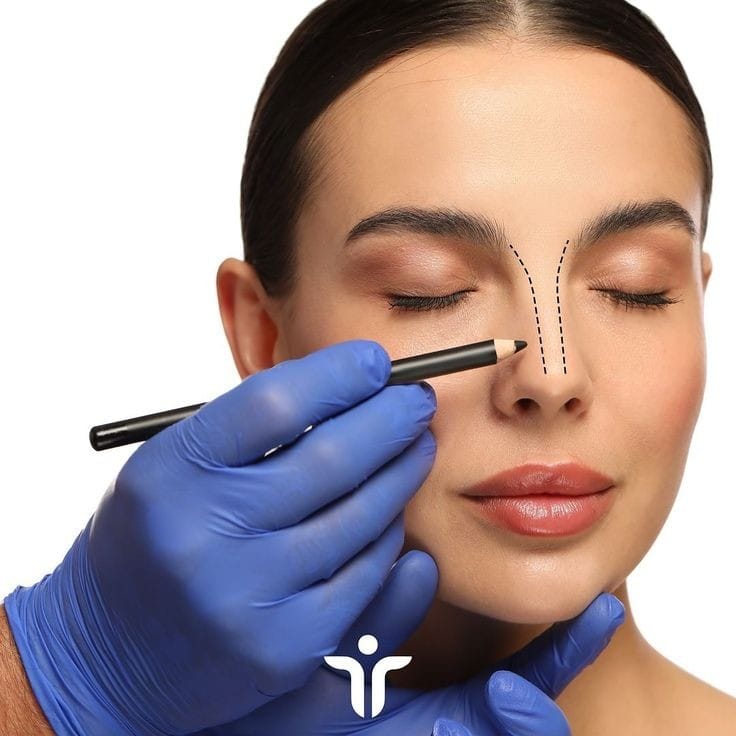
Combined Functional and Aesthetic Rhinoplasty
This surgical procedure aims to combine medical corrections—such as improving nasal breathing—with aesthetic enhancements to the appearance of the nose.
It is commonly performed in cases of a deviated septum, breathing difficulties, or nasal fractures, while also being tailored to the patient’s facial structure and proportions.
During the operation, which is done under general anesthesia, the surgeon reshapes the nasal bones and cartilage and performs both internal and external corrections according to the patient’s medical and cosmetic needs.
This is a safe and effective procedure that improves both nasal function and appearance, enhancing the patient’s confidence.

Nasal Septal Perforation Repair
This surgical procedure is designed to repair a hole in the nasal septum, which can lead to symptoms such as breathing difficulties, nosebleeds, dryness, or whistling sounds during breathing.
The surgery is performed through the nostrils with no external incisions, using grafts from the patient’s own tissue or synthetic materials to close the perforation.
It can be done under general or local anesthesia, with a recovery period of several weeks.
This is an effective treatment for improving nasal function and enhancing quality of life.

Endoscopic Sinus Surgery
Endoscopic sinus surgery is a minimally invasive procedure aimed at treating chronic sinus conditions such as recurring infections, congestion, or nasal polyps.
During the procedure, the surgeon uses an endoscope—a small instrument with a camera—to access the nasal and sinus cavities through the nostrils, without making external incisions.
This allows for the clearing of blocked sinuses and improvement of airflow and drainage.
It is a safe and precise procedure, ideal for patients suffering from chronic sinusitis that does not respond to medication, significantly improving their quality of life.

Nasal Fracture Reduction Without Surgery
This is a medical procedure in which a nasal fracture is manually corrected without the need for surgical intervention.
It is typically performed shortly after the injury, while the nasal bones are still movable.
Under local anesthesia or sedation, the physician gently repositions the broken bones using precise manual techniques.
This is a quick and effective solution for restoring the nasal structure and preventing deformities, suitable for simple fractures that do not require complex surgical correction.
Recovery is rapid, and patients can usually return to their normal routine within a few days.

Thyroidectomy (Thyroid Gland Removal Surgery)
Thyroidectomy is a surgical procedure in which all or part of the thyroid gland is removed, depending on the patient’s medical condition.
The surgery is performed by specialized surgeons, aiming to treat various thyroid-related conditions.
When is the surgery performed?
Thyroid nodules or tumors: When there is suspicion of malignancy (cancer) or benign tumors that cause symptoms.
Hyperthyroidism (overactive thyroid): When other treatments, such as medications or radioactive iodine, are not effective.
Goiter (thyroid enlargement): When significant thyroid enlargement puts pressure on the trachea or esophagus.
Chronic thyroid inflammation: In cases where it significantly affects the patient’s quality of life.

Ear Reduction or Ear Pinning Surgery (Otoplasty)
This surgical procedure is designed to improve the appearance of the ears, particularly in cases of protruding, overly large, or asymmetrical ears.
The surgery is suitable for children aged 6 and older, as well as adults seeking to alter the shape of their ears for aesthetic or medical reasons.
During the procedure—performed under local or general anesthesia—the surgeon reshapes the cartilage, bringing the ears closer to the head or reducing their size, as needed.
Recovery takes about a week, during which patients are required to wear a special bandage to help maintain the new shape.
This is a safe and highly successful procedure that enhances not only the appearance of the ears but also the patient’s self-confidence.

Facelift and Neck Lift Surgery
This surgical procedure is designed to rejuvenate the appearance of the face and neck by removing loose skin, tightening underlying muscles, and restoring volume to areas that have lost their natural contour.
The surgery is performed under general or local anesthesia, with discreet incisions placed along the hairline and around the ears to minimize visibility.
The result is a refreshed, natural-looking appearance.
Recovery typically takes about two weeks, with final results becoming visible after several months.
This is an ideal solution for individuals seeking a more youthful look and a boost in self-confidence.
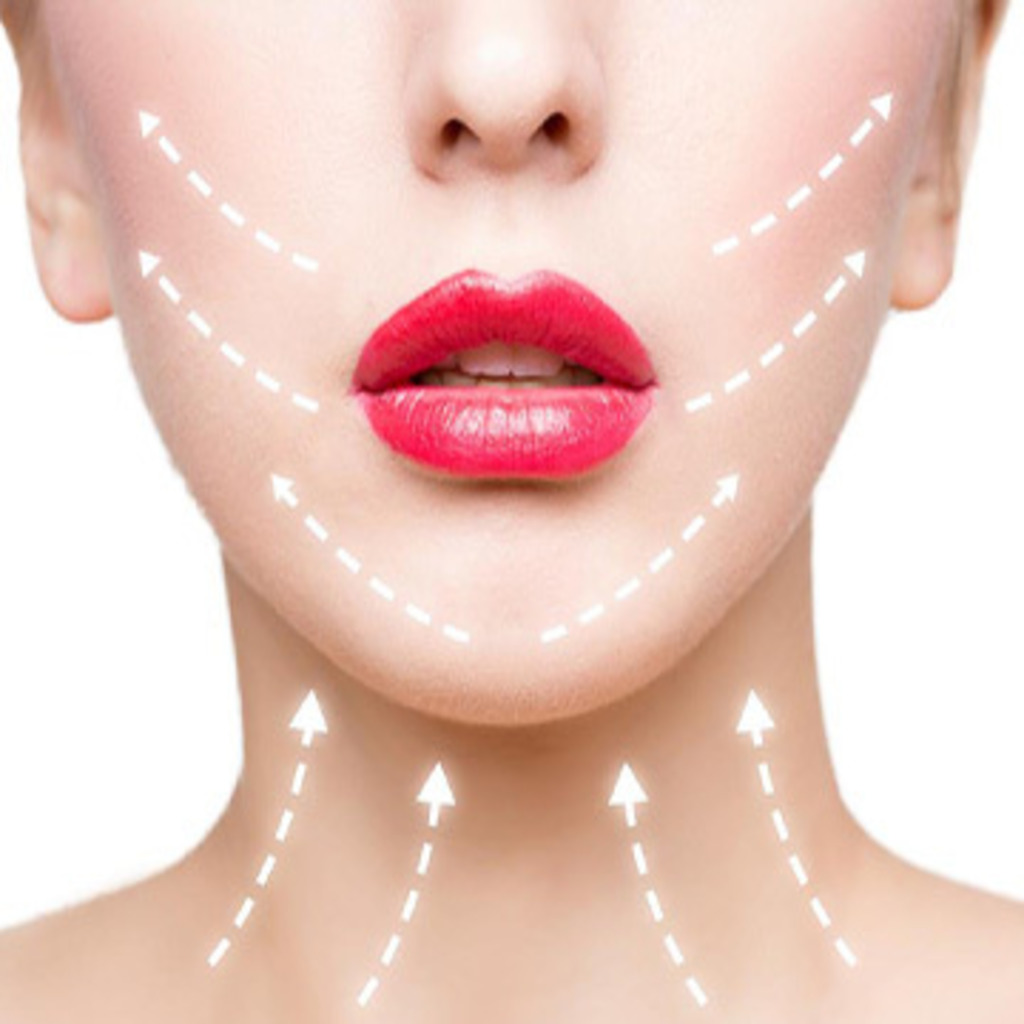
Salivary Gland Removal Surgery
This is a surgical procedure performed to remove the largest salivary gland—the parotid gland—located on the sides of the face.
It is usually indicated due to benign or malignant tumors, chronic infections, or salivary gland stones.
The surgery is performed under general anesthesia. During the procedure, the surgeon carefully removes the gland while preserving the nearby facial nerve, which controls facial muscle movement.
The operation typically lasts several hours, and recovery generally takes a few weeks.
This is a safe and effective procedure that significantly improves the patient’s function and quality of life.

Ear Ventilation Tube Insertion (Tympanostomy)
This is a short surgical procedure performed to treat chronic fluid buildup in the middle ear, recurring ear infections, or hearing loss—most commonly in children.
During the surgery, performed under general or local anesthesia, a tiny ventilation tube is inserted into the eardrum to allow fluid drainage and improve air circulation in the ear.
The procedure takes about 10–15 minutes, recovery is quick, and the tubes usually fall out on their own within a few months.
This is a safe and effective treatment that significantly improves hearing and overall quality of life.
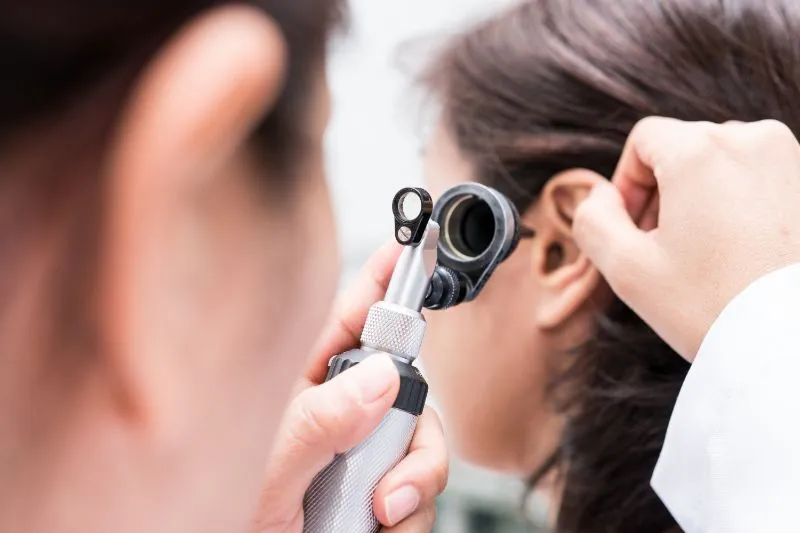
Treatment of Microtia
Microtia is a congenital condition in which the outer ear (auricle) is underdeveloped or absent, varying in severity.
The condition may also involve the absence of the ear canal, leading to conductive hearing loss.
Treatment includes the use of hearing devices such as BAHA (Bone-Anchored Hearing Aids) to improve hearing, as well as reconstructive plastic surgeries to restore the shape of the auricle, depending on the severity of the case and the patient’s age.
This treatment combines medical and aesthetic solutions to improve both hearing function and the patient’s self-confidence.

Tonsil and Adenoid Removal (Tonsillectomy and Adenoidectomy)
This surgical procedure is performed to address breathing difficulties, snoring, recurrent throat infections, or swallowing problems caused by enlarged tonsils or adenoids.
During the surgery—performed under general anesthesia—the tonsils are removed or the adenoids are reduced, depending on the medical need.
It is a safe procedure with a relatively short recovery time, typically about one week.
The surgery significantly improves quality of life, especially in children who suffer from frequent infections or sleep-related breathing issues.
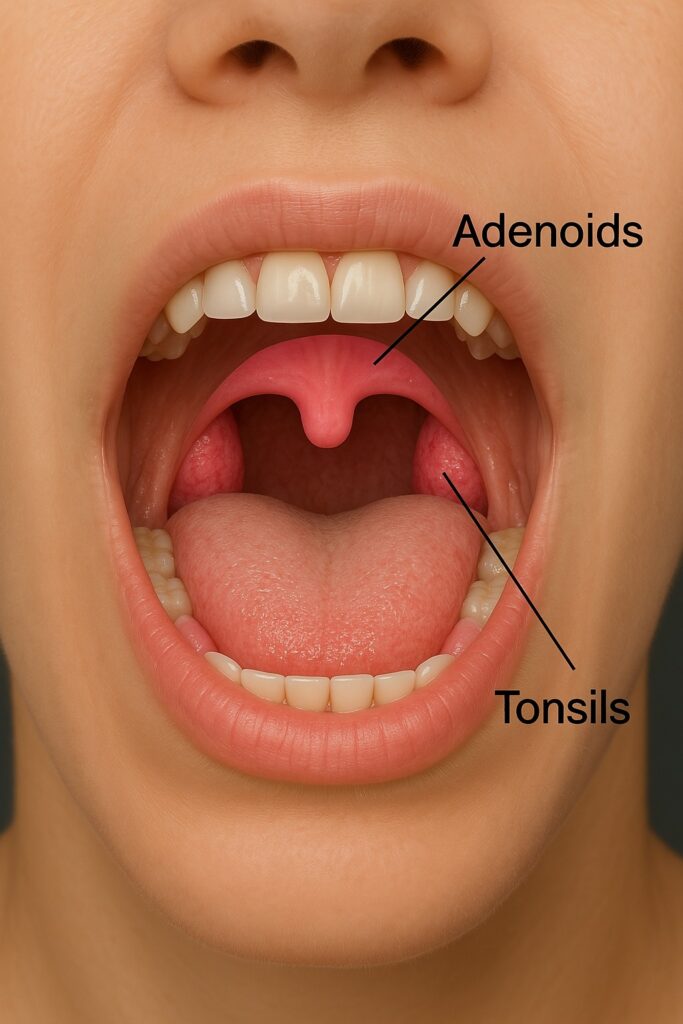
Frequently Asked Questions (FAQs)
What Are the Possible Risks and Complications of Surgery?
Every surgical procedure involves certain risks, such as infection, bleeding, or reactions to anesthesia.
It is important to discuss the specific risks related to your procedure with your doctor.
What Non-Surgical Treatment Options Are Available for My Condition?
In some cases, non-surgical treatments may be an option. It’s important to consult with your doctor to review all available treatment alternatives.
Will I Need Additional Treatment After the Surgery?
In some cases, further treatment may be required, such as physical therapy or follow-up procedures.
Your doctor will discuss this with you based on your specific condition.
How Should I Prepare for Surgery?
Preparing for surgery may include stopping certain medications, fasting before the procedure, and getting your home ready for the recovery period.
Your doctor will provide detailed instructions tailored to your specific procedure.
What Is the Expected Recovery Time After Surgery?
Recovery time varies depending on the type of surgery and your overall health.
Your doctor will be able to provide a personalized estimate based on your specific case.
Will I Need to Undergo Tests Before the Surgery?
In many cases, your doctor may request blood tests, a chest X-ray, or an EKG prior to surgery to ensure you are in suitable health.
These tests help reduce risks and allow for the anesthesia and surgical treatment to be tailored to your individual needs.
Looking for professional care in ear, nose, and throat?
Dr. Tamar Tobi Porat provides surgical treatments and professional consultations with a warm and patient-centered approach – for both children and adults.
Dr. Tamar Tobi Porat © 2025 All Rights Reserved
ד"ר תמר טובי פורת is proudly powered by WordPress
